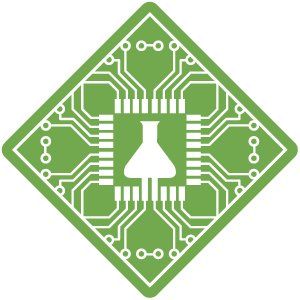预约演示
更新于:2025-05-07
ISM012-042
更新于:2025-05-07
概要
基本信息
在研机构 |
权益机构- |
最高研发阶段临床前 |
首次获批日期- |
最高研发阶段(中国)临床前 |
特殊审评- |
关联
100 项与 ISM012-042 相关的临床结果
登录后查看更多信息
100 项与 ISM012-042 相关的转化医学
登录后查看更多信息
100 项与 ISM012-042 相关的专利(医药)
登录后查看更多信息
6
项与 ISM012-042 相关的文献(医药)2023-11-01·European Journal of Medicinal Chemistry
Corrigendum to “Tetrahydropyridin-4-ylpicolinoylglycines as novel and orally active prolyl hydroxylase 2 (PHD2) inhibitors for the treatment of renal anemia” [Eur. J. Med. Chem. 238 (2022) 114479]
作者: Zhang, Linjian ; Zhang, Xiaojin ; Li, Zhihong ; Sun, Zhuoli ; Fang, Shaocong ; Su, Kaijun ; Mao, Mingxuan
2023-07-13·Journal of Medicinal Chemistry1区 · 医学
Preferred Conformation-Guided Discovery of Potent and Orally Active HIF Prolyl Hydroxylase 2 Inhibitors for the Treatment of Anemia
1区 · 医学
Article
作者: Yang, Fulai ; Du, Zhongqiu ; Zhang, Xiaojin ; Su, Kaijun ; Chen, Yafen ; Sun, Zhuoli ; Zhang, Linjian ; Dong, Ying ; Li, Xiang ; Yang, Le ; Qiu, Xusheng ; Wu, Yue
2022-08-01·European Journal of Medicinal Chemistry
Tetrahydropyridin-4-ylpicolinoylglycines as novel and orally active prolyl hydroxylase 2 (PHD2) inhibitors for the treatment of renal anemia
Article
作者: Zhang, Linjian ; Zhang, Xiaojin ; Li, Zhihong ; Sun, Zhuoli ; Fang, Shaocong ; Su, Kaijun ; Mao, Mingxuan
1
项与 ISM012-042 相关的新闻(医药)2024-12-11
·生物世界
撰文丨王聪
编辑丨王多鱼
排版丨水成文
炎症性肠病(IBD)是一类以胃肠道炎症和上皮损伤为特征的进行性慢性疾病,主要包括克罗恩病(CD)和溃疡性结肠炎(UC),40%的中度至重度IBD患者缺乏适当的药物或疗法,因此开发IBD的干预措施仍是一项迫切的临床需求。组织学黏膜缓解与IBD的长期临床结局和患者报告结局的改善密切相关,但目前的标准疗法抗炎治疗并不能直接促进黏膜愈合。促进上皮修复和减轻肠道炎症的靶向疗法可能是一种有效、实用的替代治疗方案。
英矽智能(Insilico Medicine)开发的PandaOmics是一个商业可用的人工智能(AI)平台,该平台从组学数据和已发表文献中的靶点信息中确定了PHD1/PHD2-HIF1α信号 轴可作为IBD的治疗靶点。
然而,现有的PHD抑制剂在IBD的临床试验中均告失败。这可能是因为全身性的PHD抑制与安全性风险相关(例如心血管和肿瘤副作用),而现有的PHD抑制剂(例如2-酮戊二酸类似物或二价铁离子螯合剂)缺乏特异性,因此增加了脱靶不良反应的风险。
2024年12月11日,英矽智能(Insilico Medicine)的研究人员在 Nature 子刊 Nature Biotechnology 期刊发表了题为:Intestinal mucosal barrier repair and immune regulation with an AI-developed gut-restricted PHD inhibitor 的研究论文。
该研究描述了英矽智能的生成式人工智能药物设计平台Chemstry42及其下属模块设计的一款肠道限制性的PHD特异性抑制剂,用于治疗炎症性肠病(IBD),并在临床前显示出了对肠黏膜屏障的修复和免疫调节作用。
缺氧诱导因子脯氨酰羟化酶(PHD)抑制剂已被批准用于治疗肾性贫血,但其在炎症性肠病(IBD)的临床试验中由于缺乏疗效而失败。
在这项最新研究中,英矽智能首先利用生物研究引擎PandaOmics展开疾病相关的靶点筛选和优先排序,最终确认以HIF-PHD作为开发治疗IBD药物的潜在靶点。然后,利用Chemistry42下属Generative Chemistry模块,基于已报道的PHD复合物结构,预先搭建优先片段、指定六个关键药理点,进而启动化合物生成。同时,通过Chemistry42内置的新颖性、合成可行性等多维度筛选器,获得具有创新分子骨架的苗头化合物系列。
在后续优化过程中,Chemistry42旗下Alchemistry被用于PHD2-配体复合物的结合自由能估计,进而辅助候选药物药效评估。同属于Chemistry42的ADMET profiling则纳入溶解度、渗透性等成药性质助力以肠道限制性强效PHD抑制剂为目标的结构-活性关系(SAR)优化,最终获得候选化合物ISM012-042。
ISM012-042在临床前研究中表现出良好的安全性和药代动力学特性,在多种实验性结肠炎小鼠模型中恢复了肠屏障功能,减轻了肠道炎症,从而减轻结肠炎。
特异性、肠道限制性强效PHD抑制剂ISM012-042的开发
ISM012-042可缓解结肠炎,恢复肠屏障功能,重编程结肠免疫环境
总的来说,该研究报告了英矽智能(Insilico Medicine)基于其商业化Pharma.AI平台中生物研究引擎PandaOmics和生成式人工智能的药物设计平台Chemstry42设计的治疗IBD的PHD特异性抑制剂ISM012-042的鉴定、开发和临床前评估。
该抑制剂在多种结肠炎小鼠模型中通过恢复肠道屏障功能和减肠道炎症减轻结肠炎。与之前的治疗IBD的PHD抑制剂不同,ISM012-042在不依赖细胞外铁水平的情况下抑制PHD,并且以显著低于IBD标准疗法美沙拉嗪的剂量发挥抗结肠炎活性,因此降低了长期服用美沙拉嗪的风险。
论文通讯作者,英矽智能创始人兼首席执行官Alex Zhavoronkov博士表示,从2019年发表于 Nature Biotechnology 的论文算起,我们已经在人工智能的帮助下提名了21个候选化合物,其中10款药物获得了临床试验批件,进展最快的项目已经完成了临床IIa期的安全性和有效性研究,该研究同样也发表在了 Nature Biotechnology 上。再次将PHD抑制剂的研究发表在 Nature Biotechnology,证明了英矽智能人工智能平台Pharma.AI的交付能力,就像SpaceX交付太空探索项目一样——我们也可以在人工智能的赋能下持续地将项目推进到临床阶段。在这项研究中,我们仅用不到12个月的时间就提名了临床前候选药物,论文详细展示了这项研究过程、高标准的实验设计、和在临床前模型中取得的成果。更令人兴奋的是,就在论文审稿期间,我们已经完成了临床1期的研究,期待尽快与业界分享更多的数据和结果。
截至论文发表,ISM012-042用于治疗IBD的两项1期临床试验正在澳大利亚(NCT06012578)和中国同步进行,旨在评估口服ISM5411剂量递增在健康受试者种的安全性、耐受性、药代动力学和食物影响,最后一例受试者均已完成试验出组,英矽智能计划于2025年早期公布这两项临床试验的顶线数据。
论文链接:
https://doi-org.libproxy1.nus.edu.sg/10.1038/s41587-024-02503-w
设置星标,不错过精彩推文
开放转载
欢迎转发到朋友圈和微信群
微信加群
为促进前沿研究的传播和交流,我们组建了多个专业交流群,长按下方二维码,即可添加小编微信进群,由于申请人数较多,添加微信时请备注:学校/专业/姓名,如果是PI/教授,还请注明。
点在看,传递你的品味
临床研究
100 项与 ISM012-042 相关的药物交易
登录后查看更多信息
研发状态
10 条进展最快的记录, 后查看更多信息
登录
| 适应症 | 最高研发状态 | 国家/地区 | 公司 | 日期 |
|---|---|---|---|---|
| 炎症性肠病 | 临床1期 | 中国香港 | 2021-01-06 | |
| 克罗恩病 | 临床前 | 中国 | 2022-01-30 |
登录后查看更多信息
临床结果
临床结果
适应症
分期
评价
查看全部结果
| 研究 | 分期 | 人群特征 | 评价人数 | 分组 | 结果 | 评价 | 发布日期 |
|---|
No Data | |||||||
登录后查看更多信息
转化医学
使用我们的转化医学数据加速您的研究。
登录
或

药物交易
使用我们的药物交易数据加速您的研究。
登录
或

核心专利
使用我们的核心专利数据促进您的研究。
登录
或

临床分析
紧跟全球注册中心的最新临床试验。
登录
或

批准
利用最新的监管批准信息加速您的研究。
登录
或

特殊审评
只需点击几下即可了解关键药物信息。
登录
或

Eureka LS:
全新生物医药AI Agent 覆盖科研全链路,让突破性发现快人一步
立即开始免费试用!
智慧芽新药情报库是智慧芽专为生命科学人士构建的基于AI的创新药情报平台,助您全方位提升您的研发与决策效率。
立即开始数据试用!
智慧芽新药库数据也通过智慧芽数据服务平台,以API或者数据包形式对外开放,助您更加充分利用智慧芽新药情报信息。
生物序列数据库
生物药研发创新
免费使用
化学结构数据库
小分子化药研发创新
免费使用
